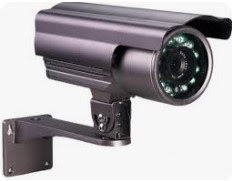Installing a CCTV IP camera involves several steps to ensure proper setup and functionality. Here's a generalized guide to the installation process:
i. Planning and Site Survey:
Identify the areas where you need surveillance coverage.
Determine the best locations for camera placement to achieve optimal
coverage and visibility.
Consider factors such as lighting conditions, potential obstructions,
and power source availability.
ii. Selecting Cameras:
Choose suitable IP cameras based on factors like resolution, lens type,
weatherproofing (if outdoor), night vision capability, and connectivity
options.
Ensure compatibility with your network infrastructure and
recording/storage devices.
iii. Network Setup:
Set up your local area network (LAN) with appropriate switches, routers,
and cables.
Configure network settings such as IP addresses, subnet masks, and
gateway addresses.
Ensure sufficient bandwidth to support the cameras' data transmission.
iv. Mounting the Cameras:
Install mounting brackets or housings securely on walls, ceilings, or
other suitable structures.
Adjust the camera angles and positions for optimal coverage and minimize
blind spots.
Ensure proper alignment and stability to prevent movement or tampering.
v. Power Supply:
Depending on the camera's power requirements, connect it to a power
source via a power adapter or use Power over Ethernet (PoE) if supported.
Ensure proper voltage and current ratings to avoid damage to the
cameras.
vi. Connection and Configuration:
Connect the cameras to the network using Ethernet cables or WiFi (if
applicable).
Access the camera's web interface or use dedicated software to configure
settings such as resolution, frame rate, motion detection, and recording
schedules.
Assign unique IP addresses to each camera and ensure they are within the
same subnet as the recording/storage device.
vii. Integration with
Recording/Storage Device:
Set up a Network Video Recorder (NVR) or a Video Management System (VMS)
to record and manage video feeds from the cameras.
Configure recording settings such
as storage location, retention periods, and file formats.
Test the connectivity and functionality of the cameras with the
recording/storage device.
viii. Testing and Optimization:
Conduct thorough testing of each camera's functionality, including video
quality, motion detection, and remote access.
Adjust camera settings and configurations as needed to optimize
performance and minimize false alarms.
Test the system's reliability and responsiveness under various
conditions, such as different lighting levels and weather conditions.
ix. Documentation and Training:
Document the installation process, including camera locations, network
configurations, and system settings.
Provide training to users or administrators on how to operate and
maintain the CCTV system effectively.
Keep records of maintenance schedules, firmware updates, and any
troubleshooting steps taken.
x. Regular Maintenance and
Monitoring:
Implement a maintenance schedule to inspect and clean cameras, lenses,
and connections regularly.
Monitor the CCTV system for any issues or anomalies, such as camera
failures or network disruptions, and address them promptly.
Keep firmware and software up to date to ensure optimal performance and security.








0 Comments